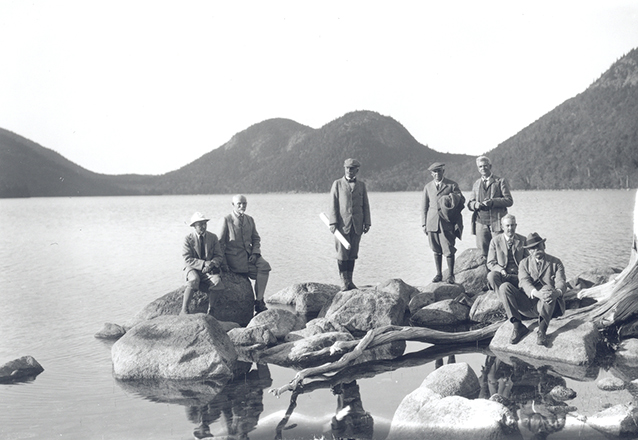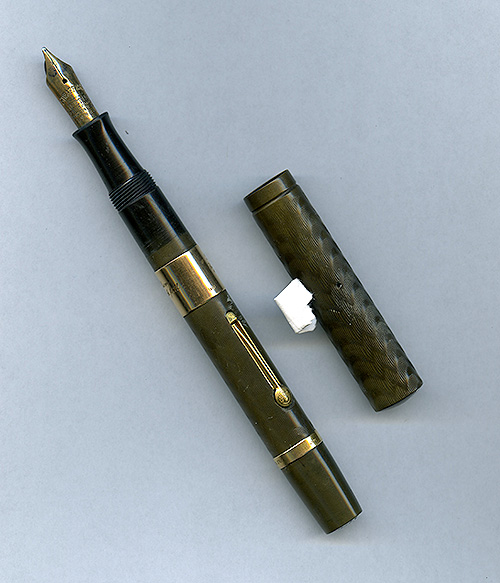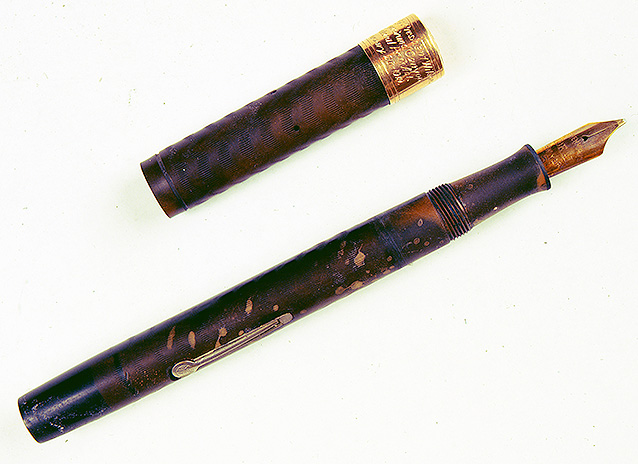February 26th is a day for celebration in Acadia, marking the historic transition of Sieur de Monts National Monument into Lafayette National Park, which eventually became the Acadia we know today. While it is a special day for Acadia, it shares the festivities with a twin in the bonds of "parkhood".

NPS
Acadia's complex coming-of-age story is inextricably tied to George Bucknam Dorr, the park's official founding father. Dorr worked with other members of the Hancock County Trustees of Public Reservations (HCTPR) for many years gathering and protecting donated land on the rocky coastline of Mount Desert Island. Under their original charter, Dorr and the HCTPR were able to successfully save thousands of acres from further private development.
Trouble arrived in 1913 in the form of a legal challenge to the charter, endangering the land that had been so painstakingly conserved. Through clever political craftsmanship Dorr thwarted the challenge, but recognized that federal protection was necessary and hoped to create a national park.

NPS Archives
A new park conceived through donated land in the eastern states was a unique concept, and would not come to fruition immediately. Dorr traveled to Washington in 1914 with specifications regarding the land in the possession of the HCTPR, and a continued hope for a national park designation. While in the capitol, it was brought to Dorr's attention that his desire for a national park was unlikely to be successful, considering the political atmospher. With the prospects of a national park designation diminishing, Dorr undauntedly pursued and sought a national monument title. After two years of Dorr's proposals, President Woodrow Wilson created Sieur de Monts National Monument on July 8, 1916.
Though successful in federally protected his beloved land, Dorr never abandoned his dream of a national park. Using his connections in Washington, Dorr was able to have two bills entered simultaneously in the House and Senate in 1919. These bills requested the creation of Lafayette National Park, a name meant to invoke a connections between the United States and France, especially during the aftermath of World War I. The bills succeeded in both the House and the Senate, but halted on the desk of President Wilson yet again. What could Dorr do?
With the post-wartime events demanding much of Wilson's time, Dorr seized a small window of opportunity while Wilson remained in D.C. between trips to Europe. The bill first required the signature of the President of the Senate, which Dorr secured without much trouble.
At the same time, a bill authorizing the transition of Grand Canyon from a national monument to a national park, similar to Dorr's project, needed Wilson's signature as well. Dorr gathered both the Lafayette and Grand Canyon bills in hand, and set out to ensure both were signed.
Dorr later wrote in his book, "I had purchased two fountain pens of the best make and taken them, filled with ink, with me to the Executive chambers, planning to ask the President's secretary to get the President to use the one and the other for our two bills." (Dorr, Story of Acadia, 74)
After managing to secure the signature of the Secretary of the Interior, Dorr recorded that, "The President worked that first, and as it proved single, day at Washington - that of February 26th 1919 - on his return from France late into the night. A friendly assistant secretary whom I had interested in our need, watching his opportunity, laid our bills before him, got his signature and started them on the way to record before I left." (Dorr, Story of Acadia, 74)
The bills were finally signed, bringing both Lafayette and Grand Canyon into "parkhood" together on February 26, 1919!

NPS Collections
Though the two parks are separated by thousands of miles, and definitively different in character, these fraternal twin parks celebrate a common bond and a unique birth story.

NPS Collections
The historic pens which Dorr purchased in Washington D.C. for President Wilson's use are still held as priceless artifacts in their respective parks today.
Last updated: September 28, 2021
